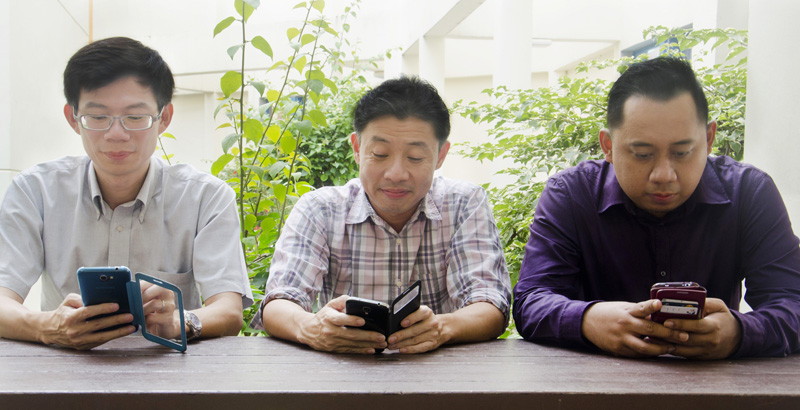Why Singapore’s English Teachers Should Embrace Singlish, Not Fight It
Is it time for Singaporean educators to embrace Singlish as a legitimate learning tool? What the Research […]
Read More
Social media are increasingly being designed into the curriculum to make classroom learning more relevant for students. We talk to a few teachers who took the leap and included social media in their lessons.
After asking his History students to create a photo montage about the Cold War for a project, Mr Lloyd Yeo faced a question: Where should he showcase their projects so that the students can appreciate each other’s work?
The Lead Teacher from St. Gabriel’s Secondary School asked his students to upload their photo montages on Edmodo, a social learning network, where he had created a closed group for his class. There, his students can share, view and comment on each other’s work at their own convenience to help the creators improve the subsequent versions.
Lloyd points out that this is just one of the many ways social media come in handy in the classroom.

(From left) Chew Ee, Lloyd and Ezal believe that social media lend itself very well to learning in the Humanities classroom.
Social media have many functions, and the ways they support teaching and learning are termed as technological affordances.
To enhance his lessons, Lloyd uses the mobile app version of Edmodo. With the app, he can upload resources and notes for students to access anytime, create discussion boards to engage them, create quizzes to check their understanding, and allow the students to post and share content.
Mr Chew Ee, a Senior Teacher from St. Andrew’s Secondary School, adds that social media not only allow students discuss anywhere and anytime, but more importantly, they make their thinking visible.
“When you deliver the lesson, do you really know whether the students are paying attention?” Chew Ee points out. ”Even if you ask them to contribute answers, only a few might put up their hands, and you just don’t have the time to call out every single student.”
Furthermore, social media act as a cordon sanitaire, according to Lloyd. “It’s a closed, sanitized environment for students to work in and share.”
For students, a safe environment is important. When they feel comfortable, they will not mind contributing and the platform becomes conducive for their learning. In fact, Mr Ezal Sani, a Senior Teacher from Fairfield Secondary School, notes that social media can give a voice to the voiceless.
“It’s interesting to see how students who are quieter in the classroom become more forthcoming online,” Ezal adds. “We also have students who suddenly develop a keen interest in the subject because they can explore it in a different manner!”
Part of education is grooming students to be confident individuals with a sense of self-worth, and social media lend itself to that.
Students who create outstanding content within closed groups can have their works uploaded on YouTube, where people outside of their school and even beyond Singapore can comment on.
“This motivates students to do well,” explains Lloyd. “When they know their work is good enough to be shared, they feel that their work is being appreciated. So, their creation brings some level of extrinsic rewards as well as intrinsic joy.”
 Lloyd believes teachers simply cannot ignore social media’s growing prominence.
Lloyd believes teachers simply cannot ignore social media’s growing prominence.
By introducing social media into their classrooms, teachers also get the opportunity to educate students about their usage of such media.
“I get to socialize the students to have the right etiquette and values when they’re on social media,” he says.
However, teachers might be hesitant about incorporating technology in the classroom because of potential logistical hiccups. Chew Ee recalls with a laugh, “Forgotten password, spoilt screen, missing mouse…something always goes wrong in the computer lab! But with smartphones, it’s now much easier and more intuitive for both students and teachers.”
But it is not just the students who benefit from using social media. Ezal shares that because he gets feedback directly from students in Edmodo, he tweaks his pedagogy accordingly. Edmodo then becomes a tool he uses for reflection.
While not all teachers are digital natives who take to social media easily, Ezal advises teachers not to give up. “When you invest your time in it, it’ll really be worthwhile.”